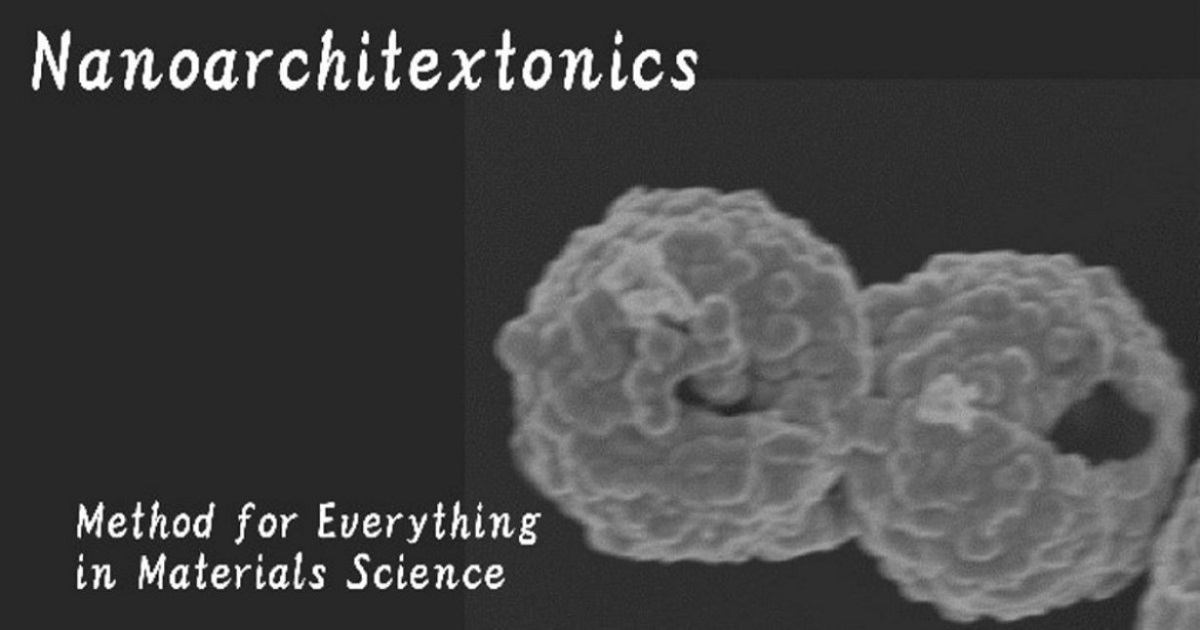Nanoarchitectonics in Materials Science, Second Edition
A special issue of Materials (ISSN 1996-1944). This special issue belongs to the section "Advanced Nanomaterials and Nanotechnology".
Deadline for manuscript submissions: closed (30 September 2025) | Viewed by 13853

Special Issue Editors
Interests: supramolecular chemistry; interfacial science; thin films; molecular recognition; nanoarchitectonics
Special Issues, Collections and Topics in MDPI journals
Interests: drug delivery vehicles; tissue engineering; clay nanomaterials; colloid chemistry; correlative microscopy; cell surface engineering; nanotoxicology; spectroscopy
Special Issues, Collections and Topics in MDPI journals
Special Issue Information
Dear Colleagues,
After our successful first two volumes of the Special Issue “Nanoarchitectonics in Materials Science”, we decided to produce an additional Special Issue on this topic. Nanotechnology is now evolving and paving the way for a new kind of materials science—nanoarchitectonics. Bottom-up approaches that generate functional materials via self-assembly of constituent molecules have been developed in several research fields. These approaches are often based on simple intermolecular interactions between a limited number of constituent elements. In a departure from these conventional approaches, nanoarchitectonics goes beyond well-known self-assembly and related strategies. Rather, it aims to build material structures that contain many components and asymmetric, hierarchical motifs. Because nanoarchitectonics is such an exhaustive conceptual interdisciplinary field, it can be applied to a wide range of research areas, including hybrid/composite synthesis, structural control, sensing, catalysis, environmental remediation, energy production and storage, device formation, biology, and medicine. These topics are the subject of this Special Issue.
Prof. Dr. Katsuhiko Ariga
Prof. Dr. Rawil Fakhrullin
Guest Editors
Manuscript Submission Information
Manuscripts should be submitted online at www.mdpi.com by registering and logging in to this website. Once you are registered, click here to go to the submission form. Manuscripts can be submitted until the deadline. All submissions that pass pre-check are peer-reviewed. Accepted papers will be published continuously in the journal (as soon as accepted) and will be listed together on the special issue website. Research articles, review articles as well as short communications are invited. For planned papers, a title and short abstract (about 250 words) can be sent to the Editorial Office for assessment.
Submitted manuscripts should not have been published previously, nor be under consideration for publication elsewhere (except conference proceedings papers). All manuscripts are thoroughly refereed through a single-blind peer-review process. A guide for authors and other relevant information for submission of manuscripts is available on the Instructions for Authors page. Materials is an international peer-reviewed open access semimonthly journal published by MDPI.
Please visit the Instructions for Authors page before submitting a manuscript. The Article Processing Charge (APC) for publication in this open access journal is 2600 CHF (Swiss Francs). Submitted papers should be well formatted and use good English. Authors may use MDPI's English editing service prior to publication or during author revisions.
Keywords
- nanoarchitectonics
- nanomaterial
- nanocomposite
- nanofiber
- nanoparticle
- nanocoating
- nanocatalyst
- self-assembly
- bottom-up approach
- hierarchical structure
- synthesis
- structural control
- environmental
- energy
- biomedical
Benefits of Publishing in a Special Issue
- Ease of navigation: Grouping papers by topic helps scholars navigate broad scope journals more efficiently.
- Greater discoverability: Special Issues support the reach and impact of scientific research. Articles in Special Issues are more discoverable and cited more frequently.
- Expansion of research network: Special Issues facilitate connections among authors, fostering scientific collaborations.
- External promotion: Articles in Special Issues are often promoted through the journal's social media, increasing their visibility.
- Reprint: MDPI Books provides the opportunity to republish successful Special Issues in book format, both online and in print.
Further information on MDPI's Special Issue policies can be found here.
Related Special Issue
- Nanoarchitectonics in Materials Science in Materials (16 articles)







